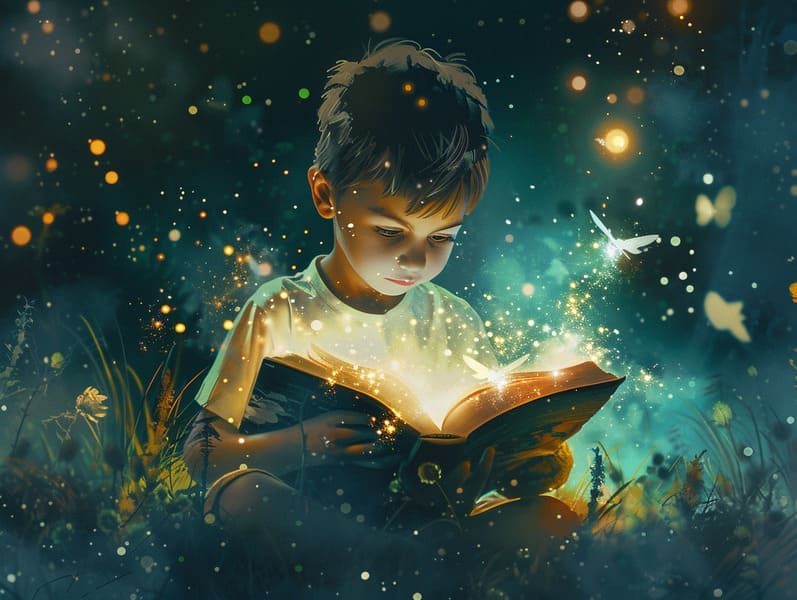The Genesis of Mythical Fairy Tales with Their Steadfast Mystique.
The Genesis of Mythical Fairy Tales with Their Steadfast Mystique.
Blog Article

Classic fairy tales have timeless appeal. These narratives have been transmitted from one generation to the next long before they were ever transcribed. They originated from a variety of backgrounds, including Eastern traditions. They were initially passed along among mature audiences, often carrying themes and messages reflective of the societal norms and beliefs of the time.
The renowned Brothers Grimm, Jacob and Wilhelm, were among the first to compile and publish many of these beloved narratives. Their published works, "Grimm's Fairy Tales," included stories like "Cinder Maid," "Hansel and Gretel," and "The True Story of Snow White," which have since become essentials in the world of famous fairy tales. Similarly, the Danish author's imaginative fairy tales, such as "The Mermaid," and "The Ugly Duckling," have enchanted hearts worldwide, securing their place in the pantheon of timeless fairy tales.
Though they are centuries old, fairy tales remain as significant as ever, especially as bedtime stories for kids. These fantastical tales are now available in diverse formats, including vibrantly illustrated books, fantastical animations, and web-based fairy tales.
Their ongoing significance can be connected to several fascinating points:
Significant Morals: Traditional fairy tales often present important moral lessons. Narratives like "The Tale of the Boy Who Cried Wolf" teach the importance of integrity, while "The Story of the Tortoise and the Hare" emphasize the benefits of resolve and modesty. These tales offer little ones clear distinctions between truth and falsehood, guiding their moral compass in a kind yet important way.
Compassion and Knowledge: Classic fairy tales frequently include beings facing trials and tribulations, inspiring kids to resonate with their struggles and back their triumphs. For instance, "Beauty and Her Beast" demonstrates the importance of seeing beyond looks to acknowledge the real character of a person, nurturing empathy and understanding.
Cultural Understanding: Many old fairy tales are saturated in the cultural contexts from which they were born. Delving into these tales can provide illuminating insights into different social structures, developing a sense of cultural respect and appreciation.
Fantasy and Imagination: The whimsical elements in ancient fairy tales—magical beings—promote children’s creative dreams. These fairy tales bring readers to fantasy realms, revitalizing imaginative dreams and a sense of delight that stays a lifetime.
Ancient fairy tales are not only spellbinding but also edifying. They act as alluring tools in developing various cognitive and emotional skills in young readers. When timeless fairy tales are narrated, they promote language proficiency by teaching new vocabulary and elaborate sentence structures. This practice also enhances hearing perception and focus, as young ones hang on every word, ready to see what happens next.
Furthermore, conversing about the themes and characters of timeless fairy tales can develop critical thinking and thinking skills. Young readers are instructed to notice patterns, predict happenings, and grasp cause and effect. These reflections also further children express their thoughts and feelings, cultivating their emotional intelligence.
In today’s information age, the prevalence of online storybooks has made these tales more obtainable than ever. Web-based platforms and web apps feature ample collections of traditional fairy tales that can be explored or played anytime, anywhere. Fairy tales read out loud are particularly common, giving an fun way for young ones to immerse in these alluring stories. Narrated books and read-out-loud videos lead characters and settings to life, often paired with entrancing audio effects and musical scores that amplify the tale journey.
The everlasting appeal of ancient fairy tales lies in their ability to shift to changing times while keeping hold of their central messages. Contemporary renditions of these stories often showcase more diverse figures and modern settings, making these guys them accessible to today’s audience. However, the core values of boldness, sympathy, and impartiality remain unchanged, continuing to influence young readers of all ages.
Traditional fairy tales also offer a sense of solace and closeness. They disclose a coherent narrative with a unmistakable beginning, middle, and end, often coming to a close with the culmination of conflicts and the triumph of virtue over vice. This uniformity can be placating for young ones, yielding a sense of steadfastness in an unpredictable world.
Ancient fairy tales continue to enchant and instruct new generations, maintaining their majesty and meaningfulness in modern society. As children's bedtime stories, they present to a perfect blend of wonder and wisdom, advancing moral values, empathy, and creativity. The existence of online fairy tales and the prevalence of fairy tales read aloud secure that these traditional stories remain reachable to new generations.
By guarding and circulating these tales, we continue to cherish the rich tapestry of folklore and cultural heritage. Whether you are perusing a artistically illustrated book, accessing a internet library, or listening on an voice book, the majesty of classic fairy tales is always within reach. These fairy tales demonstrate of the undying impact of storytelling and its ability to tie us across centuries and lands.
If you are viewing a vibrantly illustrated book, exploring a digital collection, or hearing an read-aloud story, the attraction of traditional fairy tales is always within reach.
These fairy tales demonstrate of the eternal strength of fairy tales and its ability to bring us together across generations and cultures, forging a link that delights and instructs alike.